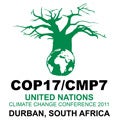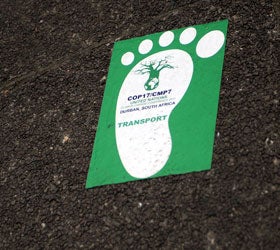 “The world is locking itself into an unsustainable future.” That’s the headline on the press release for this year’s World Energy Outlook(WEO). This conclusion, coming from the sober, serious International Energy Agency (IEA), sure grabbed attention at a panel discussion I moderated here in Durban Monday.
“The world is locking itself into an unsustainable future.” That’s the headline on the press release for this year’s World Energy Outlook(WEO). This conclusion, coming from the sober, serious International Energy Agency (IEA), sure grabbed attention at a panel discussion I moderated here in Durban Monday.
In presenting the Outlook, Laura Cozzi, IEA’s Senior Economist, laid out the WEO’s three scenarios for the future. Two of them, the ‘Current Policies’ scenario — that is, business-as-usual — and the ‘New Policies’ one, that is, governments cautiously implement commitments already made — do not get us where we need to be by 2035. Only one of them does that, the third, so-called ‘450 Scenario’, which sets out an energy path consistent with a 50%-chance of holding global temperature rise to two degrees Celsius. Past and current choices have the world ‘locked into’ a high emissions path. Laura showed that the 450 scenario takes the world to a situation of ‘no carbon space left’ for new energy generation by 2017. At that point, either only zero-carbon new energy generation can go forward or, if not, for every power plant commissioned, an equivalent dirtier one will have to be shut down. 
It provoked a lively discussion. Dr. Leena Srivastava, Executive Director of India’s Energy and Resources Institute, pointed out that the ‘lock-in’ is caused not just by current patterns of production, but also by lifestyles and patterns of consumption. This resonated with the other two panelists: Dr. Subho Banerjee, Deputy Secretary of the Australian government’s Climate Change and Energy Efficiency Department, as well as Dr. Lu Qiang, of Beijing’s Energy Research Institute, a think-tank under China's National Development and Reform Commission. They reminded the audience that policy must influence patterns of consumption along with energy generation.
Even as negotiators struggle here to find convergence on climate issues, the world of action described by these experts underscores more sharply the kind of response needed to avert or mitigate the starker scenarios in this year’s WEO.
Actions by governments in coal-dominated economies such as India, China and Australia offer grounds for optimism. India has launched a national solar mission with a 20-gigawatt target, and is pushing ahead with plans to expand hydropower to ‘green’ its energy mix. China is projecting a 16% reduction in energy intensity, to be achieved by, among others, pushing forward on energy efficiency, wind power and setting up national cap-and-trade carbon trading mechanisms. Australia has adopted a climate change green growth strategy that promises to reshape its energy sector.
These are all promising moves, to be sure, but by themselves, they are not enough. More actions are needed, such as establishing the right pricing signals and policy incentives, as well as boosting mitigation efforts. Will it all come in time to meet the challenge? At what cost? All three panelists emphasized the need for additional funding for the Green Climate Fund, along with sustaining the push for technology transfer that is essential to successfully implementing even the best policy intentions.


Join the Conversation